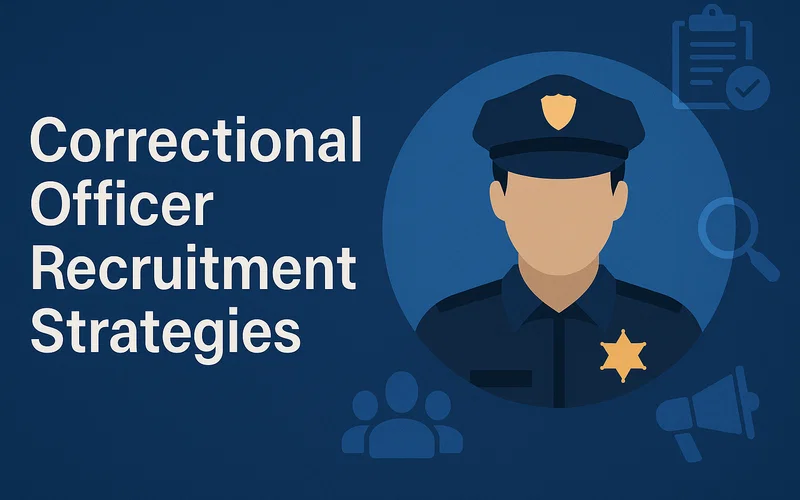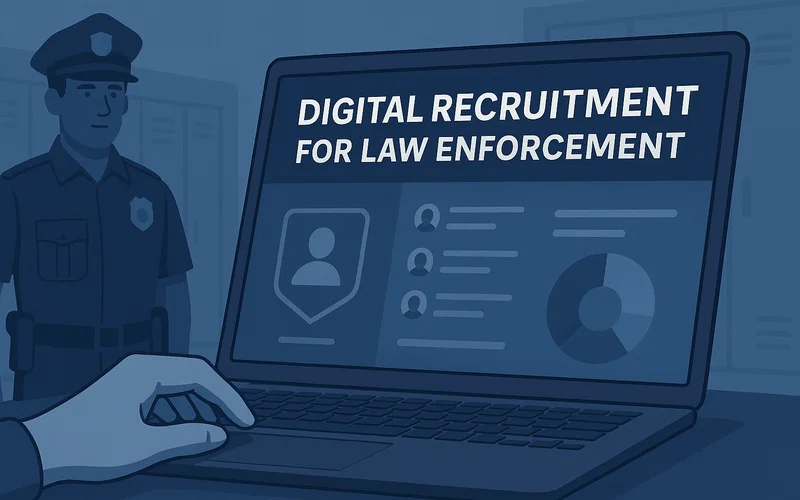
The first responder profession demands more than physical capability and technical knowledge. Police officers, firefighters, paramedics, and EMTs face life-or-death situations where emotional intelligence often determines outcomes as much as training does. Yet traditional applicant tracking systems (ATS) focus primarily on credentials, experience, and skills—missing the critical emotional competencies that separate good first responders from exceptional ones.
Travis Bradberry and Jean Greaves' groundbreaking book Emotional Intelligence 2.0 offers a framework that can revolutionize how platforms like Respond Capture identify, attract, and retain top first responder talent. By integrating EQ principles into recruitment technology, agencies can build teams better equipped to handle the intense psychological demands of emergency response work.
The Four Pillars of Emotional Intelligence in First Responder Recruitment
Emotional Intelligence 2.0 identifies four core competencies: self-awareness, self-management, social awareness, and relationship management. Each plays a vital role in first responder success and can be systematically evaluated through an emotionally intelligent ATS.
Self-Awareness: Recognizing Emotional Triggers Under Pressure
Self-aware first responders understand how stress, fatigue, and traumatic exposure affect their judgment and performance. An ATS like Respond Capture can assess this competency through:
Situational judgment scenarios that present emotionally charged emergency situations and evaluate how candidates recognize their emotional responses. Rather than asking what candidates would do, these assessments explore whether they can identify internal emotional states that might cloud decision-making.
Reflective writing prompts that ask candidates to describe moments when emotions influenced their actions, demonstrating their capacity for honest self-evaluation—a predictor of resilience and growth.
Pre-employment questionnaires designed around the EQ 2.0 self-awareness strategies, measuring how candidates currently monitor their emotions and recognize patterns in their stress responses.
By embedding these assessments early in the application process, agencies signal that emotional intelligence matters as much as physical fitness, naturally attracting candidates who value psychological preparedness.
Self-Management: Maintaining Composure When Lives Depend On It
The ability to regulate emotions, stay composed under extreme pressure, and demonstrate flexibility distinguishes exceptional first responders. Traditional interviews poorly predict this competency, but an emotionally intelligent ATS can integrate:
Behavioral consistency tracking that examines how candidates have managed stress across multiple roles and situations described in their work history, flagging patterns of emotional regulation or volatility.
Video response assessments where candidates respond to escalating scenario pressures, with AI analysis evaluating verbal and non-verbal signs of composure, flexibility, and emotional control—competencies central to Emotional Intelligence 2.0's self-management strategies.
Peer and supervisor reference questions specifically designed around self-management behaviors: "Describe how this candidate responds when plans change suddenly" or "How does this person handle criticism or setbacks?"
These integrated assessments help identify candidates who won't just survive first responder stress—they'll thrive despite it.
Social Awareness: Reading Rooms and Recognizing Unspoken Needs
First responders constantly read emotional environments—sensing when a victim needs reassurance, recognizing when a situation might escalate, or detecting when team members are struggling. Emotional Intelligence 2.0 emphasizes that social awareness can be developed, and an ATS can screen for both current capability and growth potential:
Empathy assessments using video clips of people in distress, measuring candidates' ability to accurately identify emotions and needs—a direct application of Bradberry and Greaves' social awareness techniques.
Community engagement history tracked within the application, demonstrating candidates' existing connections to diverse populations and their practice in understanding different perspectives.
Cultural competency modules integrated into the application process that assess how candidates recognize and respect cultural differences in communication and emotional expression.
Respond Capture can automatically flag candidates who demonstrate strong social awareness while providing development resources for those with potential but less experience, creating a pipeline that values and builds this critical competency.
Relationship Management: Building Trust in Crisis Moments
The final pillar of Emotional Intelligence 2.0 addresses how individuals use emotional awareness to manage interactions successfully. For first responders, relationship management means de-escalating conflicts, coordinating under pressure, and building community trust. An emotionally intelligent ATS evaluates this through:
Team scenario simulations incorporated into assessment centers, where multiple candidates work together on complex problems while evaluators track communication patterns, conflict resolution, and collaborative behaviors.
Conflict resolution case studies that explore how candidates have previously navigated difficult interpersonal situations, with scoring rubrics based on EQ 2.0's relationship management strategies.
Communication style assessments that identify candidates who naturally adapt their approach to different audiences—victims, families, suspects, colleagues—demonstrating the flexibility essential to first responder work.
Attracting Emotionally Intelligent Candidates: The Recruitment Marketing Advantage
Beyond assessment, integrating Emotional Intelligence 2.0 principles into an ATS transforms how agencies attract candidates. When Respond Capture positions emotional intelligence as a core value, recruitment marketing naturally draws candidates who see first responder work as a calling requiring psychological sophistication, not just physical courage.
Job descriptions can be reframed using EQ language, emphasizing the emotional and interpersonal dimensions of the work: "We seek officers who demonstrate self-awareness, manage stress effectively, recognize community needs, and build trust across diverse populations."
Application experiences become opportunities to demonstrate organizational values. By incorporating brief EQ assessments or reflective questions early in the process, agencies signal their commitment to holistic candidate evaluation and psychological wellness.
Recruitment content can showcase current first responders discussing emotional intelligence, resilience, and mental health—normalizing these conversations and attracting candidates comfortable with psychological introspection.
This approach doesn't just attract more applicants; it attracts better-aligned applicants who understand and value the emotional demands of the profession.
Retention Through Emotional Intelligence: Beyond the Hire
Emotional Intelligence 2.0 emphasizes that EQ is developable—and an emotionally intelligent ATS can support retention by treating hiring as the beginning of an ongoing development journey.
Onboarding EQ development plans automatically generated from assessment results give new hires personalized strategies drawn from the book's 66 proven techniques for building emotional intelligence.
Periodic EQ reassessments integrated into career development processes help first responders track their growth, identify emerging challenges (like compassion fatigue or burnout), and access appropriate resources.
Peer mentoring connections facilitated by the ATS, matching new hires with emotionally intelligent veterans who can model and teach these competencies in real-world contexts.
Wellness resource integration connecting assessment results with mental health support, stress management training, and resilience programs—demonstrating organizational commitment to the whole person, not just the employee.
By supporting emotional intelligence development throughout a first responder's career, agencies reduce burnout, improve performance, and retain their best people longer.
Implementing EQ 2.0 in Respond Capture: Practical Next Steps
For agencies ready to integrate these principles into their recruitment technology, the path forward involves several strategic implementations:
Start with stakeholder alignment. Ensure leadership, HR, and frontline first responders understand why emotional intelligence matters and support its integration into hiring processes.
Customize assessments to your context. While Emotional Intelligence 2.0 provides universal principles, the specific emotional demands differ between police, fire, and EMS roles. Tailor evaluations accordingly.
Train evaluators in EQ assessment. Technology can screen and score, but humans make final decisions. Ensure hiring managers understand emotional intelligence and can recognize it in interviews and assessments.
Measure outcomes. Track whether candidates hired through EQ-enhanced processes demonstrate better performance, fewer disciplinary issues, stronger community relationships, and longer retention.
Iterate continuously. Emotional intelligence research evolves, and your understanding of which EQ competencies predict success will deepen with data. Build feedback loops that refine assessments over time.
The Future of First Responder Recruitment
The integration of Emotional Intelligence 2.0 principles into applicant tracking systems like Respond Capture represents more than a hiring innovation—it's a fundamental reimagining of what first responder excellence means. By systematically identifying and developing emotional intelligence, agencies can build teams that don't just respond to emergencies but handle them with the psychological sophistication these critical moments demand.
In an era of increased scrutiny, growing mental health awareness, and evolving community expectations, emotionally intelligent first responders aren't just nice to have—they're essential. The question isn't whether to integrate EQ into recruitment technology, but how quickly agencies can implement these principles to attract and retain the exceptional professionals our communities deserve.
The tools exist. The research is proven. The framework is clear. Now it's time to build recruitment systems that recognize what first responders have always known: the most important equipment they carry isn't on their belt—it's in their capacity to understand and manage emotions in themselves and others.
Ready to Build an Emotionally Intelligent Workforce?
Respond Capture helps first responder agencies integrate emotional intelligence assessments into their recruitment process, identifying candidates who combine technical excellence with the psychological sophistication modern emergency response demands.
👉 Qualifying agencies can save 20% off their first-year software subscription.
Schedule a demo by contacting us at contact@respondcapture.com



